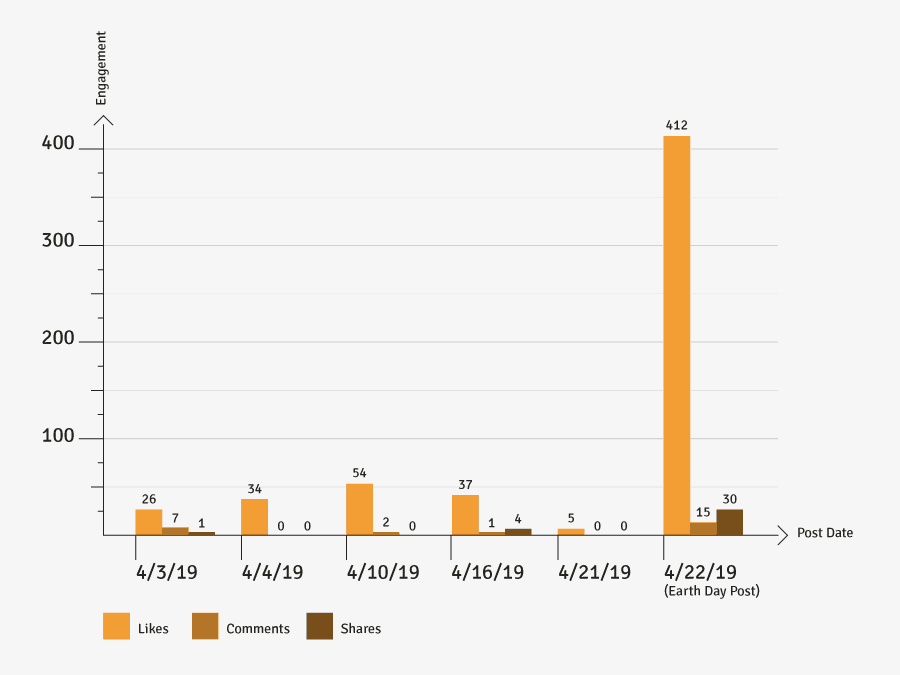The tried and true methods that businesses use to reach their audience are evolving with modern marketing trends. However, the importance of putting your brand in front of the right audience has not diminished. Your company offers a solution to your target audience’s needs in a unique way that only you can do. To make sure that your audience is aware of your solution, you need to know two things: who your audience is, and how to build a brand perception that will appeal to them.
Finding Your Audience
Before you can begin building and managing audience perceptions of your brand, you have to know who your audience is, and how they think. There are countless resources available for identifying specific demographics, but to be successful you’ll have to go deeper than just age and income statistics.
Identify Your Core Offerings
The first step in determining a target audience is a thorough understanding of what you as a company have to offer them, and what you have that sets you apart from the competition. Make sure you always know the answers to these questions:
- What services or products do I offer?
- How are my services or products superior to those offered by a competitor?
- How is my company unique in my business niche?
Knowing the answers to these questions will help you learn who the audience that will benefit from your business is, and how to represent your brand in a way that will appeal to them.
For example, if you were branding for a hypothetical furniture store, you might end up with answers like these:
- What products do I offer?
—Rustic and western furniture. - How are my products superior to those offered by a competitor?
—I offer free delivery for custom-made furniture orders. - How is my company unique in my business niche?
—Our furniture is made using only sustainable materials.
Think about your own business and decide on the most accurate and specific answers to the questions.
Meet Consumer Needs
In addition to knowing your brand inside and out, you also need to know your consumers’ needs, and how your services or products satisfy those needs.
For example, if you own a luxury travel agency, pay attention to the customers you serve and any trends that appear among them. Perhaps many of your customers are couples looking for a romantic getaway, or families looking for kid-friendly cruises. Wherever you notice similar needs, take note. Understanding your target audience’s needs in addition to their demographic information will help you develop accurate marketing personas.
Marketing Personas are brief but insightful compilations of customer data that are representative of specific sections of your target audience. The best compilations include multiple data types, from demographic statistics to customer trends and preferences.
According to Buffer.com three to five marketing personas is usually enough to represent the most significant sections of your target audience1. Don’t be afraid to adjust this number depending on your business niche.
Communicate Your Brand to Your Audience
Once you’ve established who your target audience is, you can start branding your business with them in mind. Branding your business is different than marketing or advertising it.
Branding is the process of creating an image of your company and what it stands for in the minds of your customers and target audience. The purpose of branding is not to bring in a large number of new customers, but to promote loyalty among existing ones.
When done well, branding helps create and maintain a relationship between a business and its customers. Loyal customers not only bring repeat business, but are also more likely to recommend your business to their friends, family, and business associates, which leads to new customers.
So how do you communicate your brand to your audience?
Branding for an Audience
Communicating your brand to your target audience takes effort, but the results are rewarding in many ways. The best brands are able to foster a relationship with not just their target audience, but their community as well. This relationship will keep your business in the minds of current customers and in front of new ones. To accomplish this, and communicate your brand to your audience, you’ll use brand positioning.
Brand Positioning is essentially a method to create and maintain your brand image in the eyes of your customers and potential customers.
To apply this method to your business, you need to look back at the answers you came up with when identifying your company’s core offerings.
Make Your Brand Unique
One of the most important steps in brand positioning is making your brand unique. Your company needs to do more than stand out – it needs to be one of a kind. This will both separate your company from competitors and retain customers who are attracted to the unique aspect of your brand. When you offer a product or service that no one else does, or offer a product or service in a way that no one else does, then customers seeking that specific offering will come to your business every time they need it.
To determine what makes your brand unique, take a look at your business. In our earlier example of something that could be a unique aspect of a business, we used a furniture store that retails only furniture made with sustainable materials. In every decade, and especially in 2019, environmental concerns influence how many customers choose where to take their business. If your business utilizes a program that is environmentally friendly, let people know.
For a real world example, take a look at the branding efforts of local San Marcos restaurant Gumby’s Pizza. As a local business, part of Gumby’s branding positioning is as a company with a vested interest in community issues. This type of branding positioning has already started rewarding Gumby’s with increased interaction on social media. Look at the post below from Earth Day in April, 2019:

The above post was not monetarily boosted or sponsored, yet it received significantly more interaction from followers than any other post Gumby’s made in April:

The difference between the interaction seen on the Earth Day post and the previous posts in April is significant. In branding themselves as a business invested in community improvement, Gumby’s attracts followers to whom this idea appeals. The more followers interact with a post, the more likely their connections will notice and could become followers and potentially customers as well.
Social media is only one of many mediums that can be used for brand positioning. It’s what you choose to brand that matters. For Gumby’s, a post about their dedication to becoming a more environmentally friendly business helped support their brand positioning. Now, for those pizza lovers who also feel strongly about environmental issues, Gumby’s will likely be their choice over other eateries that do not brand using the same ideal.
Research Your Competition
When determining what makes your company unique, take some time to research what your successful business competitors are doing. By looking into competitors’ strategies, you can learn from other businesses’ successes and failures.
Insight into what has and hasn’t worked for other businesses can also give you an idea of what your target audience is already thinking about. There are a few different ways to get this information:
- Keyword Research—Spend some time researching relevant keywords. There are a variety of programs online, such as Google Trends, that can help with this. If you have an SEO team working with your business, they can help you with professional keyword research strategies and software. Find what terms users are searching for related to your business. The more popular the keywords, the more competition there will be.
- Forums & Social Media—Find out what other businesses customers are talking about online. If you have social media accounts for your company, pay attention to businesses that your followers interact with besides yours.
- Real World Feedback—Find out what your existing customers have to say. What businesses do they prefer to use over others, and how are those businesses branding?
Let’s take a look at an example. Consider an HVAC contractor trying to find a way to uniquely brand themselves amongst their competitors. See below how they can begin researching their competitors.
- Keyword research for an HVAC contractor could involve searching for keywords involving your service, such as “New Air Conditioning” or “Thermostats” and more. Keywords can be very general or very specific (Need help understanding keywords? Read our article about Keyword Research for Beginners).
- Forum and social media research for an HVAC contractor might include visiting your Facebook or Twitter page and finding brands that are followed by your target audience. If you work with Nest™ and notice a lot of your audience following their brand, consider if branding yourself as a specialist in learning thermostats is an option.
- Real world feedback can be gained in several ways for HVAC contractors and other businesses. One option is to ask customers during in-person interactions. If you utilize an email capture strategy, you can also send out a survey to have customers fill out.
Now you’ve found your target audience, and identified some ideas for your company’s brand positioning, where do you go from here?
Determine and Experiment with Your Branding Strategy
You know your audience. You know what brand image you want to present to them. Now you need a way to present and manage that image successfully. There are many ways to do this, and what works for one business may not necessarily work for another, so your strategy will need to involve some experimentation. Here are some great places to start:
- Create a Positioning Statement—A positioning statement is a declaration meant exclusively for your company’s internal use. Unlike a tagline (often used for marketing purposes), this statement specifies in a sentence or two what your company’s unique value to your customers is2. Develop a statement that communicates this intent and follow it in your operations.
- Manage Brand Perception—Managing customer perceptions of your brand is important during face-to-face and online interactions. Ensure that your staff understand the image you want to present and always adhere to it in their customer interactions. For management online, make sure to respond to as many reviews and comments on your business as possible. A quick “We’re happy you enjoyed our service!” on a 5 star Google review, or taking a second to like customer comments on your Facebook page lets you keep up with how your customers are perceiving your brand. If the reactions you’re getting aren’t in line with your branding, you may need to revise your current strategy.
- Build a Physical Presence—There are several methods for building your presence as a business through internal practices and participation in your community. See our next article for an in-depth look at how to build your brand through your business’s physical presence.
An important aspect to remember when working with your branding strategy is that adjustment is okay. By taking steps to give your business a unique brand position, you are going where no business has gone before. You cannot develop a unique brand by copying another company’s strategy. As such, revision may be necessary from time to time. Listen seriously to your customer feedback. When something works, take note, and when it doesn’t, don’t be afraid to try something new.
Wrap-Up
Here we’ve looked at how to find your audience by determining your company’s core offerings, how they meet customer needs, and how branding influences customer loyalty. In addition, we’ve covered how to communicate your branding to your audience by creating an image that’s unique among your competitors, researching your business competition, and experimenting with your strategy.
The most important thing to remember throughout your branding process is what the goal of your company is. How is your company going to change the experience of your customers in a way no other company can? As long as you adhere to this ideal, you’ll be on your way to successfully branding your business.



